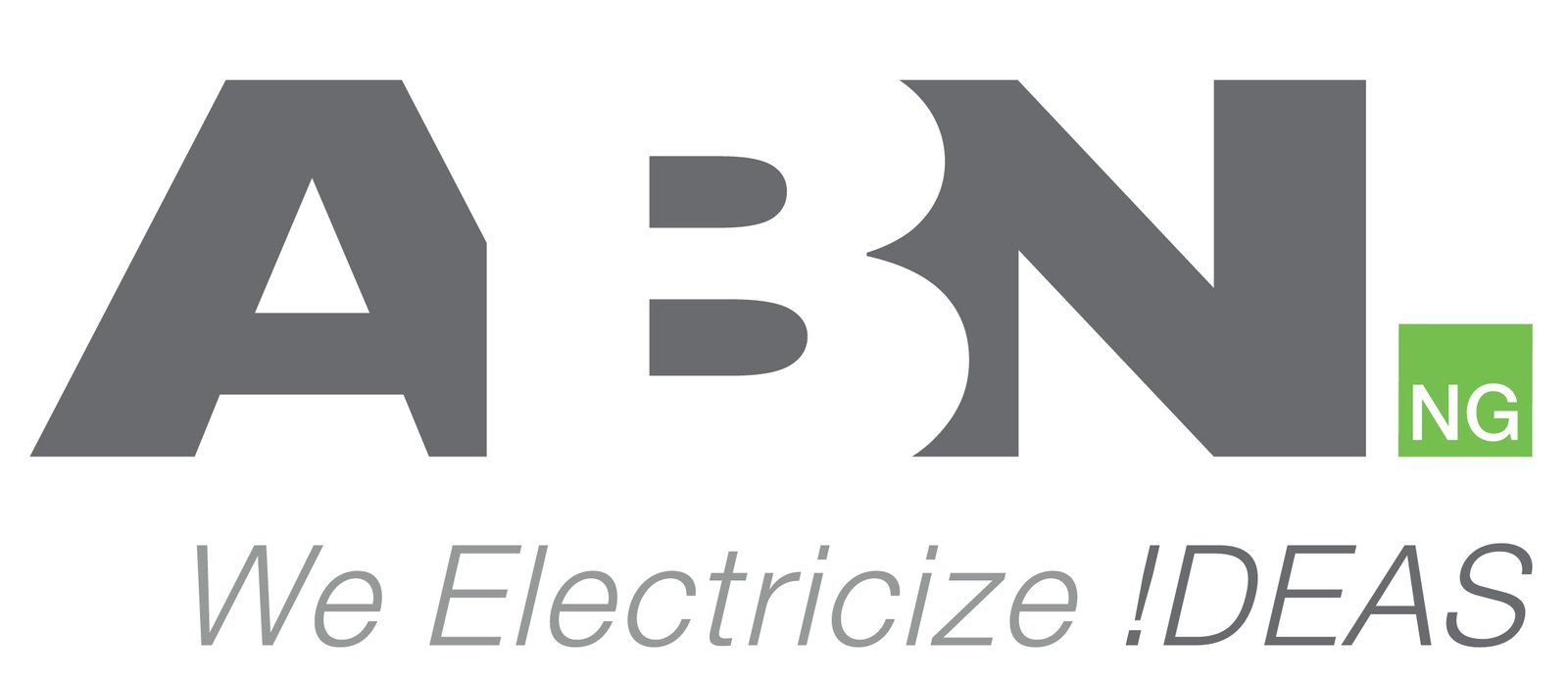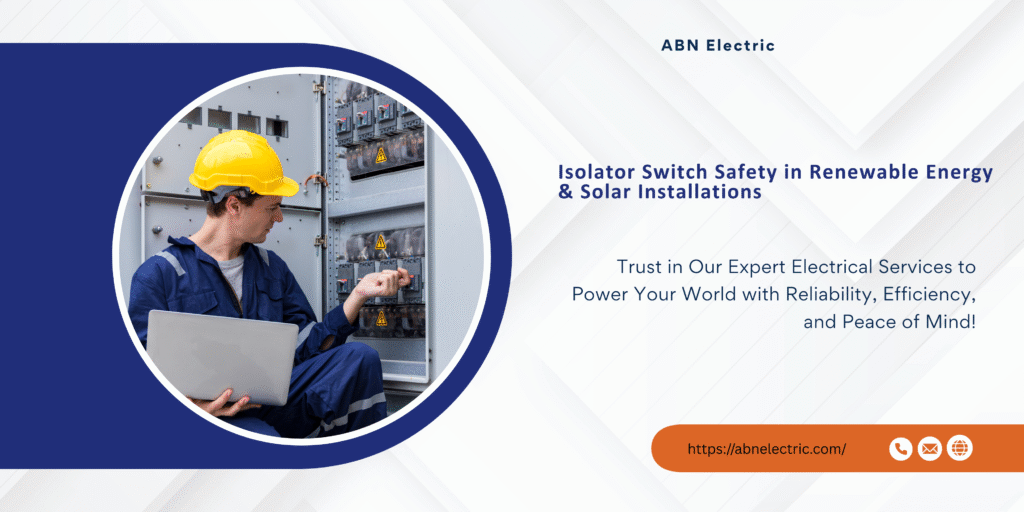Solar energy systems are rapidly transforming how we power our homes and businesses, but with this technology comes the critical need for proper safety measures. Among the most important components in any renewable energy installation is the isolator switch—a device that can literally be the difference between a safe working environment and a potentially dangerous situation.
Whether you’re a solar installer, facility manager, or property owner with renewable energy systems, understanding isolator switch safety is essential. These devices serve as the first line of defense against electrical hazards during maintenance, emergencies, and routine inspections. When properly selected and installed, they provide reliable protection that keeps both equipment and personnel safe.
This comprehensive guide will walk you through everything you need to know about isolator switch safety in renewable energy applications, from basic functionality to advanced installation considerations. By the end, you’ll have the knowledge needed to make informed decisions about electrical safety in your solar installations.
Understanding Isolator Switch Fundamentals
An isolator switch, also known as a disconnect switch, is a mechanical switching device designed to isolate electrical circuits from their power source. Unlike circuit breakers that automatically trip during fault conditions, isolator switches require manual operation and are primarily used for maintenance and safety purposes.
In solar installations, these switches serve multiple critical functions. They provide a visible break in the electrical circuit, ensuring that maintenance personnel can work safely on equipment. They also offer emergency shutdown capabilities, allowing quick disconnection of solar panels from the electrical system during fires or other hazardous conditions.
The key difference between isolator switches and other protective devices lies in their operation. While circuit breakers and fuses protect against overcurrent conditions, isolator switches focus on providing safe disconnection points. This makes them an indispensable component in any properly designed renewable energy system.
Modern isolator switches come in various configurations, including single-pole, double-pole, three-pole, and four-pole variants. The choice depends on the specific application, voltage levels, and local electrical codes. For solar installations, weatherproof enclosures are often required to protect against environmental conditions.
Critical Safety Features in Modern Isolator Switches
Today’s isolator switches incorporate several advanced safety features designed specifically for renewable energy applications. Visible break technology ensures that operators can clearly see when the switch is in the open position, eliminating guesswork during maintenance procedures.
Arc extinction chambers represent another crucial safety advancement. When electrical contacts separate under load, they can create dangerous arcs. Modern switches include specialized chambers that quickly extinguish these arcs, preventing equipment damage and reducing fire risk.
Mechanical interlocking mechanisms prevent accidental operation of the isolator switch. These features require deliberate action to operate the switch, reducing the likelihood of unintentional disconnection. Some advanced models also include padlocking provisions for additional security.
Environmental protection ratings are particularly important for solar installations. IP65 or higher ratings ensure that switches can withstand moisture, dust, and temperature variations common in outdoor environments. UV-resistant materials prevent degradation from prolonged sun exposure.
Fault current withstand capability ensures that isolator switches can handle short-circuit conditions without failing catastrophically. This characteristic is especially important in solar installations where fault currents can be substantial due to the parallel connection of multiple panels.
Installation Best Practices for Solar Systems
Proper installation of isolator switches in solar systems requires careful consideration of multiple factors. Location selection is paramount—switches must be easily accessible to authorized personnel while remaining secure from unauthorized operation. They should be positioned where they can be operated safely, away from potential arc flash zones.
The isolator switch should be installed as close as possible to the equipment it protects, minimizing the length of unprotected conductors. In solar installations, this typically means placing DC isolators near inverters and AC isolators at the main electrical panel.
Environmental considerations play a crucial role in installation success. Switches must be protected from direct weather exposure while maintaining adequate ventilation for heat dissipation. Proper cable routing and sealing prevent water ingress, which could compromise safety and reliability.
Electrical connections require special attention during installation. All terminals must be torqued to manufacturer specifications, and proper conductor sizing ensures adequate current-carrying capacity. Using the wrong wire gauge or inadequate termination techniques can create dangerous hot spots.
Grounding and bonding considerations are especially important in solar installations. The isolator switch enclosure must be properly bonded to the system grounding network to ensure fault currents have a safe path to earth. This prevents dangerous voltage buildup on equipment enclosures.
Maintenance and Testing Protocols
Regular maintenance of isolator switches ensures continued safe operation throughout the system’s lifespan. Visual inspections should be conducted at least annually, checking for signs of overheating, corrosion, or physical damage. Any discoloration around terminals or evidence of arcing requires immediate attention.
Mechanical operation testing verifies that switches open and close properly without binding or excessive force. This testing should be performed with the circuit de-energized to prevent arcing at the contacts. Lubrication of mechanical components may be required based on manufacturer recommendations.
Electrical testing involves measuring contact resistance and insulation resistance. High contact resistance indicates deteriorating connections that could lead to overheating. Low insulation resistance suggests contamination or moisture ingress that could compromise safety.
Torque verification of electrical connections should be performed during each maintenance cycle. Thermal cycling and vibration can cause connections to loosen over time, creating dangerous conditions. Using a calibrated torque wrench ensures connections remain secure.
Documentation of all maintenance activities provides valuable trending information and helps ensure compliance with safety regulations. Maintenance records should include test results, any repairs performed, and recommendations for future work.
Regulatory Compliance and Standards
Solar installations must comply with numerous electrical codes and standards that specifically address isolator switch requirements. The National Electrical Code (NEC) provides detailed requirements for disconnect switches in solar photovoltaic systems, including location, rating, and accessibility specifications.
UL standards define safety requirements for isolator switches used in renewable energy applications. UL 98 covers low-voltage switches, while UL 508A addresses industrial control panels. Understanding these standards helps ensure proper equipment selection and installation.
International standards such as IEC 60947 provide additional guidance for isolator switch selection and application. These standards are particularly relevant for equipment used in global solar installations or when dealing with international manufacturers.
Local utility requirements may impose additional restrictions on isolator switch installation and operation. Many utilities require rapid shutdown capabilities that can be activated by emergency responders, influencing isolator switch selection and placement.
Building codes may also affect isolator switch installation, particularly regarding accessibility and fire safety. Understanding the intersection of electrical, building, and fire codes ensures comprehensive compliance with all applicable regulations.
Common Mistakes and How to Avoid Them
One of the most frequent errors in solar installations is undersizing the isolator switch for the application. This can lead to premature failure or dangerous operating conditions. Always verify that the switch rating exceeds the maximum expected current by an appropriate safety margin.
Improper environmental protection often leads to premature equipment failure. Using indoor-rated switches in outdoor applications or failing to provide adequate weatherproofing can result in dangerous conditions. Always select switches with appropriate environmental ratings for the specific installation.
Inadequate access clearances create safety hazards for maintenance personnel. Isolator switches must be installed with sufficient working space to allow safe operation and maintenance. Following NEC working space requirements helps ensure adequate clearances.
Poor labeling and identification can lead to dangerous situations during maintenance or emergencies. All isolator switches should be clearly labeled with their function and the equipment they control. Use durable, weather-resistant labels that remain legible over time.
Neglecting manufacturer instructions during installation often results in safety issues or equipment failure. Each isolator switch model has specific installation requirements that must be followed. This includes torque specifications, environmental considerations, and operational procedures.
Making Your Solar Installation Safer
Implementing proper isolator switch safety measures requires a comprehensive approach that considers all aspects of the renewable energy system. Start by conducting a thorough safety assessment of existing installations, identifying any deficiencies in current isolator switch arrangements.
Develop a preventive maintenance program that includes regular inspection and testing of all isolator switches. This proactive approach helps identify potential problems before they become safety hazards. Train maintenance personnel on proper testing procedures and safety protocols.
Consider upgrading older installations with modern isolator switches that incorporate advanced safety features. While this may require initial investment, the improved safety and reliability often justify the cost. Focus on high-priority areas such as main disconnects and equipment serving critical loads.
Establish clear procedures for isolator switch operation during normal and emergency conditions. Ensure that all personnel who might need to operate these switches understand the proper procedures and safety precautions. Regular training and drills help maintain proficiency.
Isolator switch safety in renewable energy installations demands attention to detail and commitment to best practices. By understanding the fundamentals, implementing proper installation techniques, and maintaining rigorous testing protocols, you can ensure that your solar systems operate safely for decades to come. The investment in proper safety measures pays dividends in reduced risk, improved reliability, and peace of mind for all stakeholders.

